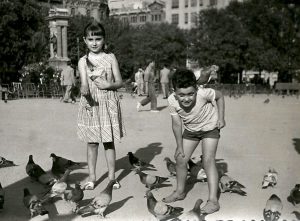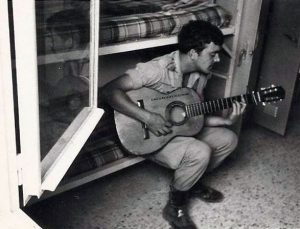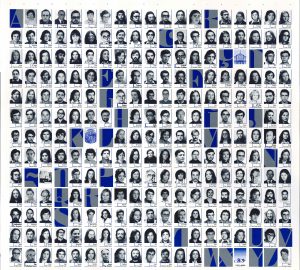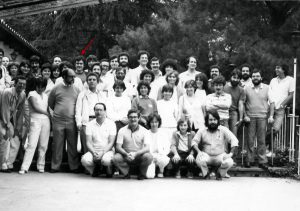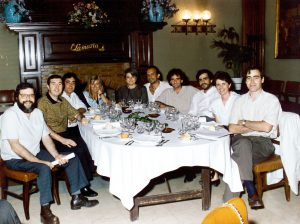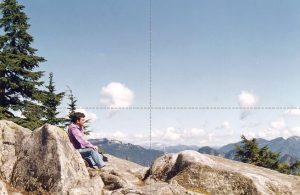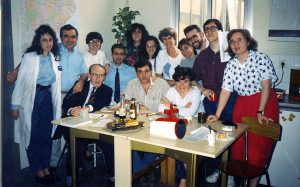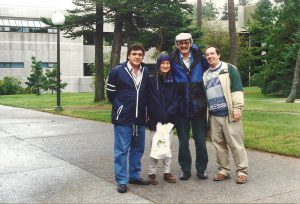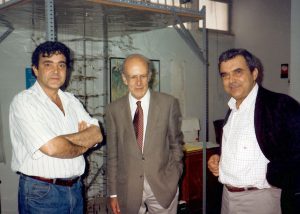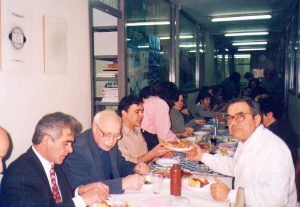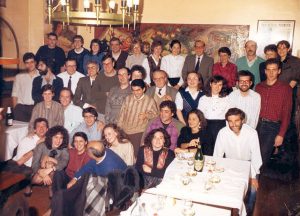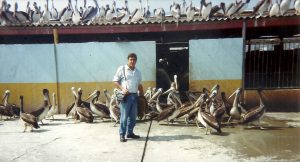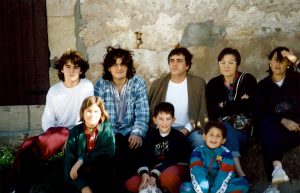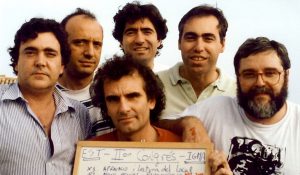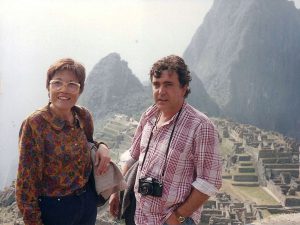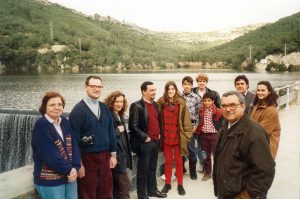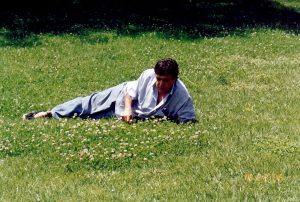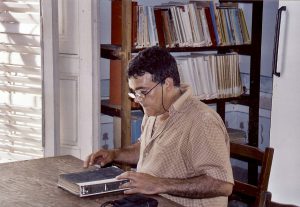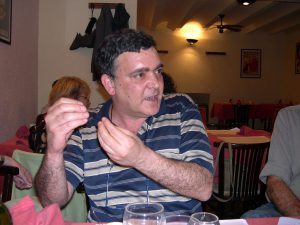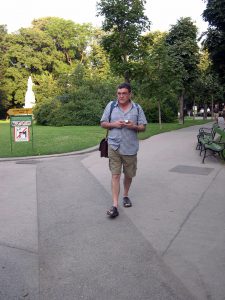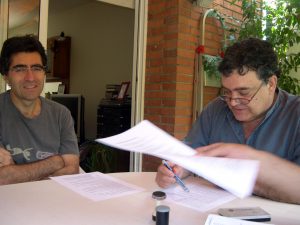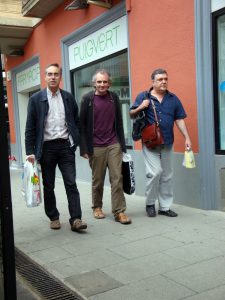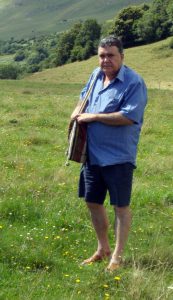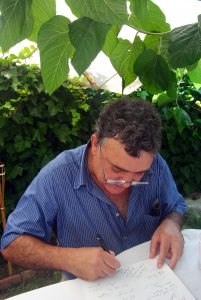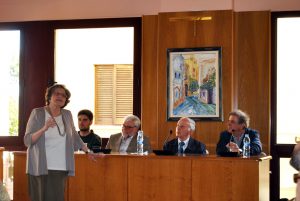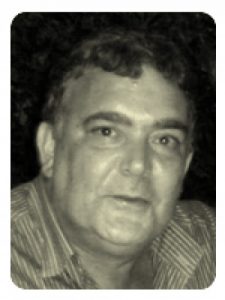
Manel Chiva Royo was born in Barcelona in 1952. He studied Secondary Education in Pedagogium San Fernando School of Barcelona. After studying the pre-university course in Peñalver Academy of Barcelona he initiated the Bachelor of Biology in the University of Barcelona, obtaining the graduate degree the month of June of 1975.
Before entering into detail of the two activities of his professional facet (teaching and scientific research) it is necessary to mention a fact that marked his professional future when he still was student of the Bachelor of Biology: it was during the fourth course, in 1973, when choosing the elective course “Biophysical of Macromolecules” taught by the Drs. Joan Antoni Subirana and Lluis Cornudella (RIP). The first explained the physical and methodological bases in order to study the structural aspects of the macromolecules, whereas the Dr. Cornudella explained aspects more functional, what could say the fundamental principles of the direction of the transmission of the genetic information of the period: DNA –> RNA –> Protein. The course was completed with a practical or exposing a bibliographic subject. It was a lot innovative course of all the ones of the career so much for his contents and, especially, for his dynamic. The practical offered the possibility to go to the Department of Macromolecular Chemistry of the Higher Technical School of Industrial Engineers of the Polytechnic University of Barcelona, do experiments and argue the results. Some of these experiments remained incorporated to works that he developed. The commitment of the students went beyond was said in the program. A good number of students that chosen that elective course are now brilliant researchers and teachers of what could be said the Subirana School. Of course, one of them was Dr. Manel Chiva. Part of the works of his practical allowed him to obtain the bachelor’s degree (thesis) directed by Dr. Subirana.
When finished the Bachelor of Biology, Manel Chiva went as tenured teacher in the Department of Geology and Edaphology of the Faculty of Pharmacy of the University of Barcelona (UB). After two academic courses he was incorporated as tenured teacher to the Faculty of Medicine of the UB where combined his task of teaching the course of Medical Physics with the realization of his doctoral thesis under the direction of the Dr. Cristóbal Mezquita, of the Department of Human Physiology. The subject of study was finding out the paper of some proteins during the process of the spermatogenesis employing the rooster as an animal model. When he ended the doctoral thesis he obtained one position as Assistant Professor in the mentioned department.
Teaching career
During the academic courses of 1976-1977 and 1977-1978 Manel Chiva was full-time Assistant Professor of practical classes of Geology and Edaphology in the Department with the same name of the Faculty of Pharmacy of the UB.
During the academic courses of 1979-1980 and 1980-1981 he was full-time Assistant Professor of practical of Medical Physics in the Department with the same name of the Faculty of Pharmacy of the UB. During the course 1981-1982 he was full-time Assistant Professor of practical of Physiology in the Department of Human Physiology, of the Faculty of Medicine of the UB. Later, during the period 1982-1985, he upgraded to Professor and finally, the year 1985, he entered to form part of the official professors of the UB with the category of Tenured Professor; at present, Department of Physiological Sciences II in the Campus of Bellvitge where he was until the month of May of 2011.
During the years 1993 to 1998 he also was teacher of Human Physiology of Food and Nutrition Degree (CESNID, associated centre to the University of Barcelona). Further to enumerate the different periods of time where he realized his teaching activity, first as a teacher of the Faculty of Pharmacy and next as a teacher of Medical Physics of the Faculty of Medicine, it is necessary to highlight his teaching path for the years of dedication and for the numeral of students that he formed; it is necessary to focus in the course of Human Physiology he taught in the Degree of Medicine and in other educations (Odontology, Nutrition and Podiatry). Fruit of his experience as teacher and documentation in the diverse matters of Physiology came the publication of a monograph: Apunts de Fisiologia, that since the year of his publication (1999) until 2006 was the text book of the course of Structure and function of the human body. The book was edited by the CESNID (University of Barcelona) and still today is a reference book of for the students of the degree.
The teaching task was combined with hundreds of hours of practical classes, tutorials and seminars for the students and also tasks of organization in the Department and in the Faculty of Medicine. Another task, very important in his teaching activity but that overlaps with his scientific labor, was as director of theses and masters of the degree and the one as director of Doctoral Theses. Finally, it should be noted that Manel Chiva translated into Catalan the work De la Physiologie générale de Claude Bernard (1813-1878). His intention was to do an updated reinterpretation of the work of Professor Bernard, considered as the creator of the experimental medicine. Unfortunately this task has remained unfinished after his death the month of May of 2011.
Research activity
Another important stage in his scientific formation, after what we have mentioned during the stage of student, was his incorporation as a Professor in the Faculty of Medicine. There he combined his teaching task with the realization of his Doctoral Thesis under the direction of the Dr. Cristóbal Mezquita. How already it has mentioned, the subject of study was finding out the paper of some proteins during the process of the spermatogenesis employing the rooster as an animal model.
The study of the interaction of the proteins of the chromatin with the DNA during the spermatogenesis was the conductive thread of his entire path as researcher and in fact, this interest already came by the practice that did in the department of the Dr. Joan Antoni Subirana. That consisted in building a model of a DNA molecule and see how could interact some metals, amino acids and small peptides. Later, and continuing with the study of x-rays diffraction of the interactions between the DNA and the amino acid lysine, he began publishing in the international scientific literature by the year 1980, with the publication with the Dr. Subirana of a chapter of book where presented the results of his degree thesis.
When he ended his doctoral thesis continued with his current scientific issue that was, briefly explained, the study, from an evolutionary point of view, of the histone and non-histone proteins that compact the chromatin during the process of the spermatogenesis, employing several animal models. Part of the work of his doctoral thesis was published in the prestigious scientific magazine Nucleic Acid Research, in 1982.
The study of this subject carried it to keep an intense scientific relation with the Dr. Subirana as well as with other researchers of our and other countries. In several occasions he stayed in Vancouver, in the Department of Zoology of Columbia University (Canada), collaborating with the Dr. Harold Kasinsky and also in the Department of Biochemical of the same university with the Dr. Joan Ausió, that had been a colleague from university and nowadays is teacher of that university.
During his research of species for the study of the spermatogenesis, he also went to other countries and collaborated with scientists of Chile (Institute of Zoology of the Austral University of Chile and the University of Antofagasta) and Peru (Centre of Biochemical Investigation and Nutrition, Major National University of San Marcos, Lima).
His scientific production, always focused in the study of the proteins that compact the chromatin during the spermatogenesis, did not have interruptions since the first works until the day of his death. It is so much like this, that he reviewed the two last articles that have been published after passing during the process of his illness. This scientific activity done for his sake and his contributors has given place to seven doctoral theses and four thesis or masters of degree. Also this work has been reflected in the publication of around sixty international articles, around twenty of national, several monographs and with the participation to a big quantity of reports and conferences to national and international congresses.
Final considerations
After his death, the Faculty of Medicine of the UB (Bellvitge Campus) paid him tribute by his authorities and for highlighted scientific and contributors of the Dr. Manel Chiva Royo. They reflected his academic and scientific profile highlighting his value. On the other hand, and in order to complete his biography it is necessary to mention that Manel Chiva also was a big naturalistic and a literate person, reading lover, impassioned about music and engaged with the social, cultural and political aspects of our country. An enthusiastic follower, already in pre-democratic periods, of the claiming processes, that, between other activities, brought it to follow and share the interests of the singer-songwriter Raimon and by means of his songs, to be a deep connoisseur of the poetry of Salvador Espriu and Ausiàs Marc, go in of others. Therefore, his scientific formation went accompanied of a solid humanistic formation.
“I am biologist for vocation and my vocation arose here, to Altafulla: so much to the rock of Gaià as a the hollow rock of the creek Jovera to Tamarit. All the “Fortí” are fossils. Of fossils I have found many and when you are young impresses. I found fauna (octopuses, seaweeds…), diving with Martí and Quico, my cousins…”
Acknowledgements
This biographical review has been made by Joan Serratosa i Serdà, Scientific Investigator of the CSIC, Cerebral Ischemia and Neurodegeneration Department in the Institute of Biomedical Research of Barcelona (IIBB-CSIC).
Bibliography
You can consult a very detailed bibliography (theses direction / degree masters, doctoral theses directed, international publications, books and publications) in the article of the magazine Estudis Altafullencs of the IEC, number 36, pages 99-115. You can consult and download here the pdf


